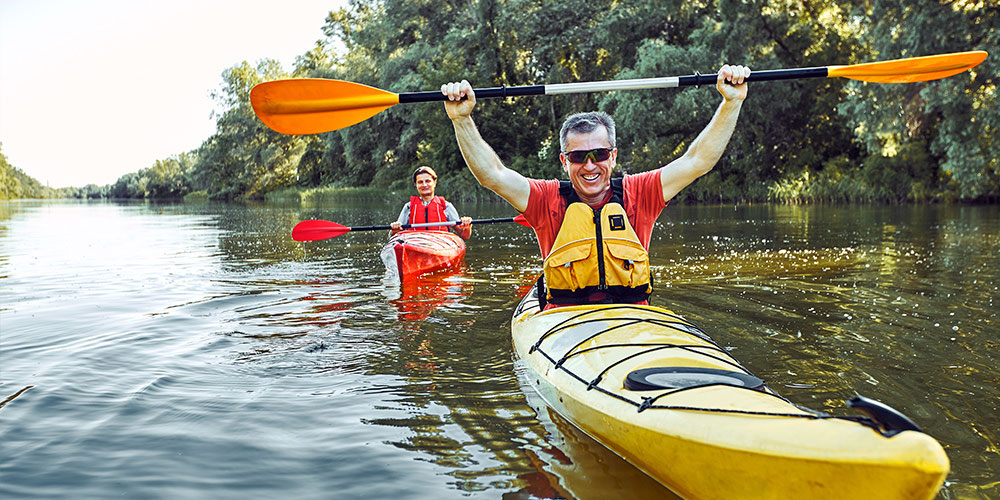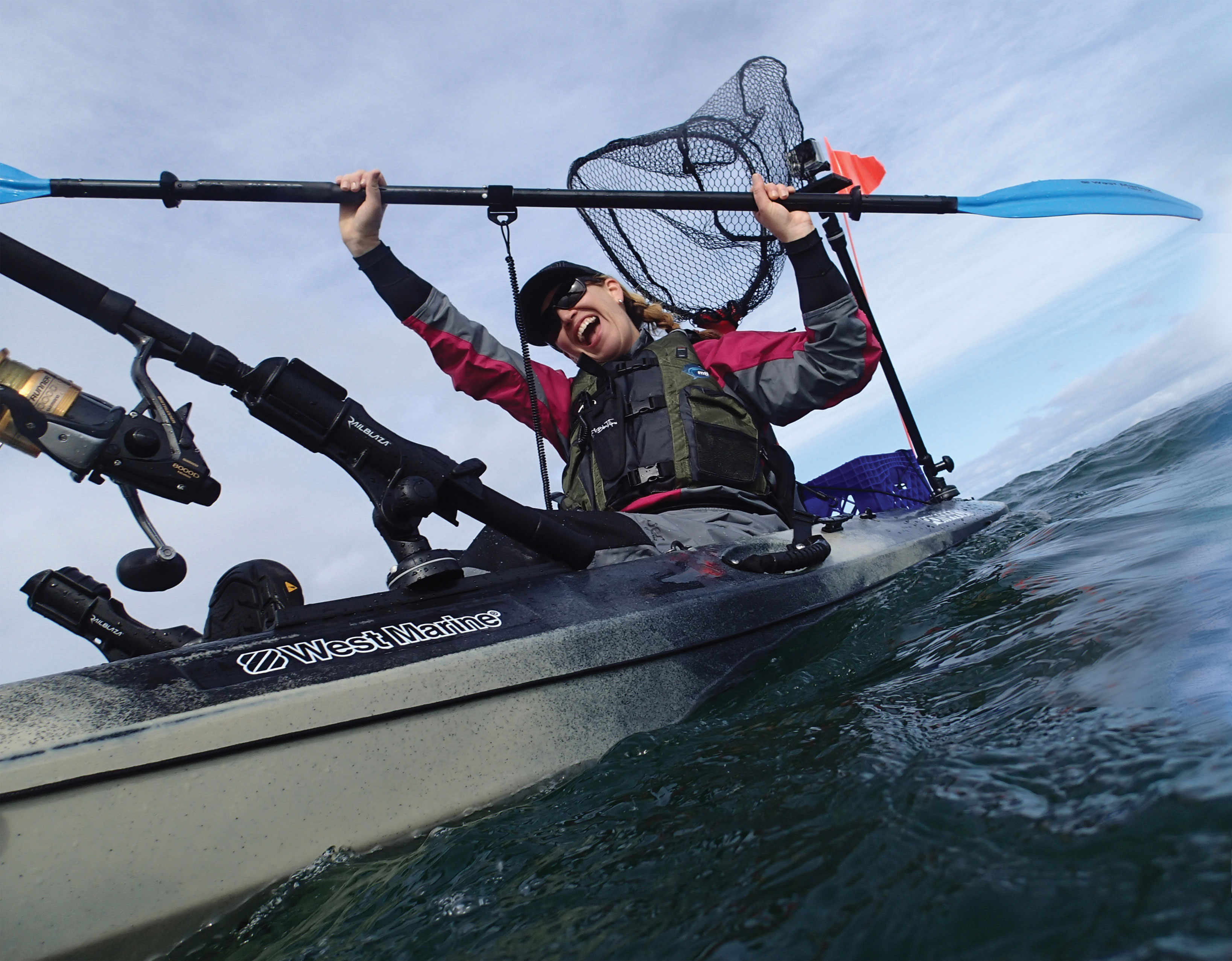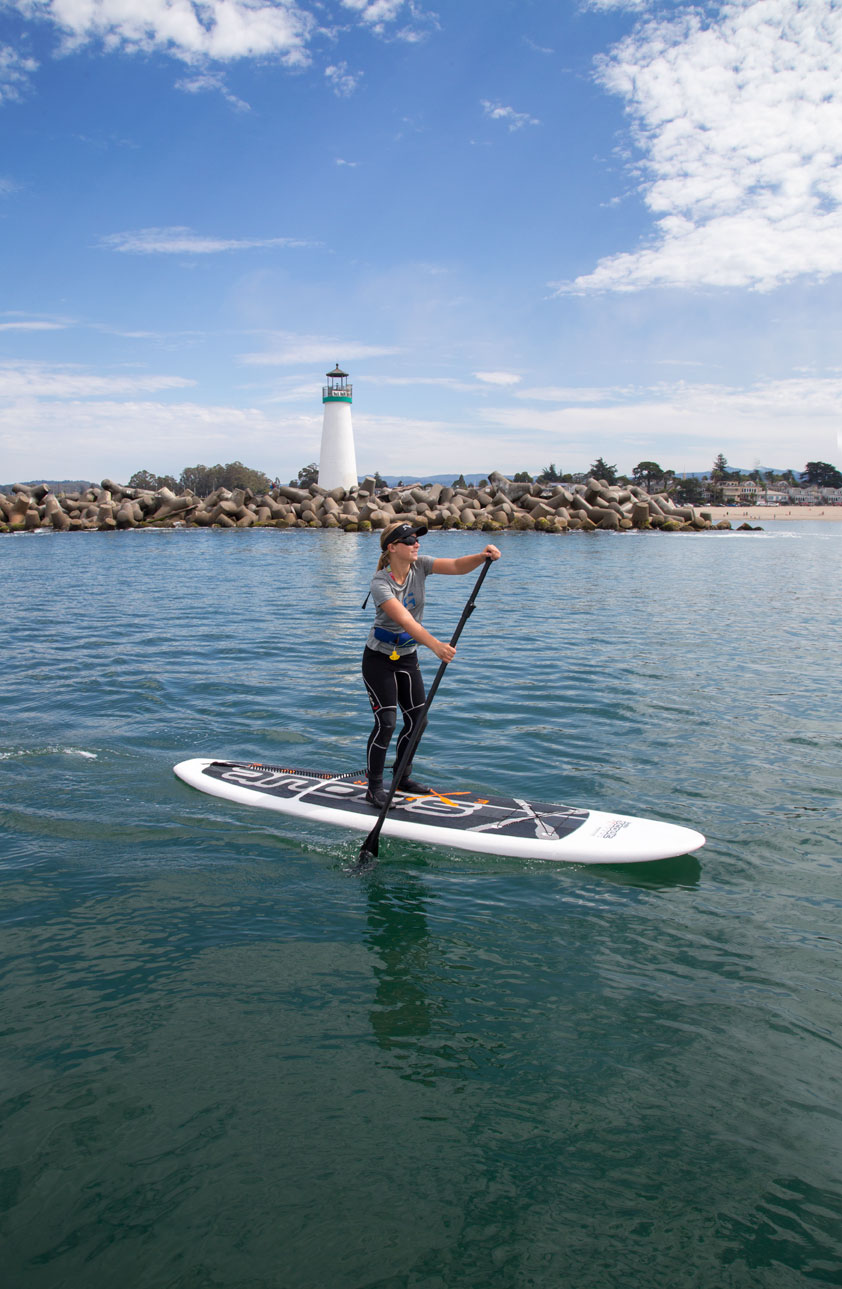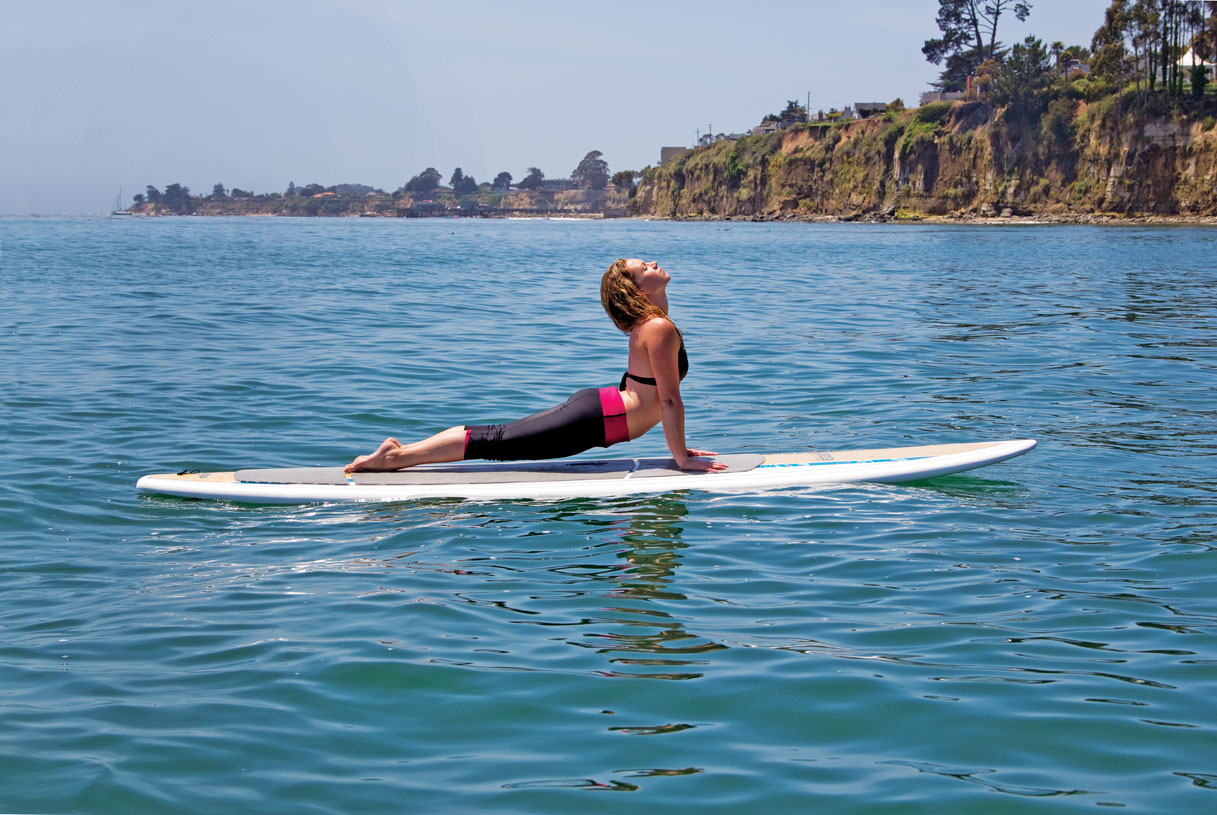

The Benefits of a Paddling Fitness Program
If the approach of winter finds your boat or board in storage and you surfing a couch, consider pursuing a program of off-season, paddle-specific exercise. Doing so will help to ensure that when the thaw arrives and the waters run again, you will be prepared for the type of exertion and endurance that paddling requires. A paddling fitness program should include a combination of aerobic exercise, targeted strength training and exercises to improve your flexibility and balance.
Aerobic Exercise
We strongly suggest that you make one or more forms of aerobic exercise part of your paddling fitness routine. Also known as cardiovascular or “cardio” training, aerobic exercise helps to strengthen your heart and tones your entire body.
Benefits of aerobic exercise include reduced risk of injury, weight loss and maintenance, and increased endurance. According to Dr. Edward Laskowski, co-director of the Mayo Clinic Sports Medicine Center, “As a general goal, aim for at least 30 minutes of physical activity every day. If you want to lose weight or meet specific fitness goals, work to increase your activity even more.” We should add that the amount of exercise you need will vary with the type of paddling you enjoy. For example, kayakers who spend their time in swift rivers or ocean surf require more conditioning than recreational paddle boarders who prefer the serene, flat waters of a lake.
Examples of aerobic exercise include continuous running, swimming, cross-country skiing, biking, rowing, Jazercise® and other high-intensity fitness classes found in a gym. Among all aerobic activities, swimming is an excellent choice for anyone involved in paddle sports, because it conditions the upper body and helps to ensure that you can self-rescue in the event you are separated from your kayak or SUP.
Targeted Strength Training

Aerobic exercise should be supplemented with a regular program of targeted strength training that focuses on the specific muscle groups used when paddling. For both kayaking and SUP, this includes your “core” muscle groups, which are the major muscles of your trunk that move, support, and stabilize your spine. Come spring, strengthening your core musculature will translate into greater endurance and less chance of injury or muscle strain as you perform the rotational movements required to paddle a kayak or SUP. Between kayaking and SUP there are some variations. For example, kayaking relies less upon the legs, which can really take a beating when you balance on a SUP.
Apart from your core, you should also focus on strengthening your shoulders, particularly the muscles around the rotator cuff, which are utilized during paddling. Keeping these muscles strong will help to maintain the stability of the shoulder joint, which is one of the least stable joints in the body. Regular strength training will also help you to build up a reserve of power that you can unleash to quickly cope with wind or waves. As you increase your muscle mass, you will also burn calories more efficiently which, like aerobic training, will help you to control or reduce your weight. Incidentally, apart from the known health benefits of keeping your weight in check, lightening the load will cause your boat or board to float higher in the water—making it easier to paddle. We should also mention that good upper body strength will come in handy when the time arrives to lift your kayak or board off the top of your car!
Strength training can be done at home or at a gym. Useful strength training can be done with little or no equipment, such as pushups, pullups, abdominal crunches and leg squats. Inexpensive resistance bands, available at many sporting goods stores, can be used to target virtually any muscle group of the body. Traditional free weights (dumbells and barbells) are another way to target specific muscle groups, as are a variety of exercise machines available in a gym.
Strength Training for Older Paddlers
If you happen to be an older paddler, strength training is especially important, since muscle mass naturally decreases with age. As Dr. Laskowski states “If you don’t do anything to replace the lean muscle you lose, you’ll increase the percentage of fat in your body.” He also states that “Strength training can help you preserve and enhance your muscle mass—at any age.”
Yoga and Pilates

Yoga practice on a SUP
For flexibility and balance, two forms of exercise that we really like are yoga and Pilates, which because of their emphasis on focus and form can help to improve how you sit in your boat, stand on your board or pull your paddle through the water. Comparing one to the other, yoga works best for overall conditioning, and with its emphasis on stretching, also helps you to maintain flexibility and avoid injuries. Pilates exercise focuses on the core muscle groups, the same ones you use when paddling your boat or board. Both yoga and Pilates can be practiced at home, in a gym, or in the case of SUPs, out on the water. Because of this, yoga and Pilates have become very popular among stand-up paddle boarders.
Conclusion
If you are not able to kayak or SUP during the winter, you have a lot of options to keep yourself in shape. If you have not already, now is the time to begin with a regular program of exercise so that when spring arrives you can maximize your fun and assure that better prepared friends don’t leave you in their wake!